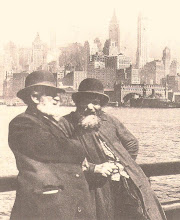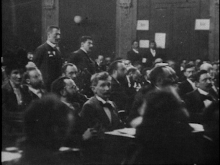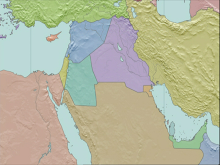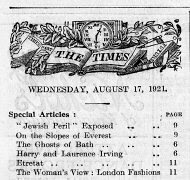The series starts today (14mar31) with the first lunation and crescent of the series -- running in total until September 2015.
This has some contingency on the Signpost Years since Clarke indicated the year 2015 in his writings, and the ‘blood moons’ have some contingency with the era around 1948 and 1967 also.
First then, here are the basic astronomical elements of the current tetrad as they relate to an observer in the UK.
*******************************
LUNAR - SOLAR ECLIPSES 2014-5
(North Wales)
(1) 15 April 2914 Total Lunar Eclipse
moon rises: 2048 sets: 0616 [BST]
magnitude 1.30
partial phase begins: 0702
total phase begins: 0810
time of maximum eclipse: 0846
total phase ends: 0928
partial phase ends: 1036
Visible: West in Asia, East in N America, and parts of S America (partial phase only just clips UK through France and W Africa).
(2) 29 April 2013 Partial Solar Eclipse
sun rises: 0544 sets: 2044 [BST]
time of maximum eclipse: 0706
eclipse is partial, magnitude 0.99
Visible: in the southern hemisphere, all of Australia and south India ocean.
(3) 8 October 2014 Total Lunar Eclipse
moon rises: 1837 sets: 0723 [BST]
magnitude 1.16 total
partial phase begins: 1017
total phase begins: 1127
time of maximum eclipse: 1156
total phase ends: 1224
partial phase ends: 1335
Visible: West in Asia and Australia, parts of NW America and partially so in NE and S America.
(4) 23 Oct 2014 Partial Solar Eclipse
sun rises: 0759 sun sets: 1801 [BST]
time of maximum eclipse: 2243
eclipse is partial, magnitude 0.82
Visible: East in Alaska, much of N America and Canada.
(5) 20 March 2015 Total Solar eclipse
sun rises: 0619 sun set: 1829 [GMT]
time of maximum eclipse: 0945
Visible: eclipse is total in: Svalbard islands, Norway.
- partial in many other northern hemisphere locations: UK, Spain, Central Europe, N Russia, clips N Africa and into Israel.
NB. It will be spectacular in N Wales with only a small crescent of the southern sun left visible at mid-eclipse.
(6) 4 April 2015 Total Lunar Eclipse
moon rises: 2008 sets: 0644 [BST]
magnitude 1.1 total
partial phase begins: 1118
time of total eclipse: 1300
duration of total phase: less than 300 seconds.
partial phase ends: 1446
[NASA gives umbra-shadow contacts of u2 = 11.57.54 to u3 = 12.02.37 Universal Time, making a total phase of only 283 seconds !]
Visible: well aspected in East Australia, all new Zealand as total. Widely visible for parts of the partial phases in N and S America, China, Russia, India, Vietnam.
(7) 13 Sept 2015 Partial Solar Eclipse
sun rises: 0645 sun set: 1938 [BST]
time of maximum eclipse: 0754
eclipse is partial, magnitude 0.79
Visible: in the southern hemisphere only for S Africa, Antarctic, Atlantic and Indian oceans.
(8) 28 Sept 2015 Total Lunar Eclipse
moon rises: 1919 sets: 0727 [BST]
magnitude: 1.27 total
partial phase begins: 0208
total phase begins: 0312
time of maximum eclipse: 0348
total phase ends: 0423
partial phase ends: 0527
Visible: Greenland to Antarctic, N and S America, Alaska, Canada, UK, east Europe, Africa, Middle-east, India, Norway, eastward to central Russia, India and Tibet.
NB: This will be an especially lovely aspect in Israel, as the sun comes up over the eastern horizon, the whole tetrad sequence will end with the moon setting into the western horizon, with the earth’s shadow simultaneously retreating off the moon’s face.
Notes:
All times are for North Wales coast Bangor-Llandudno, 24 hour clock, and adjusted for seasonal GMT or BST on the given occasion.
Magnitude solar eclipse 0.90 means 90% of sun covered AT THE LOCATIONS where the effect is maximum, other areas on earth will see a lesser cover. A magnitude 1.60 lunar eclipse means the moon is totally covered, and will be embedded in 60% of the earth’s potential total shadow, at maximum. Observer location makes very little ‘difference’ in lunar magnitudes.
‘West in UK’ means the object, sun or moon, will be in the western sky in the UK at the mid-point of the event.
Eclipses may be available to view in real- time by NASA Live feed around the globe on internet. However, be correct to match any times for local N Wales with global observatory times.
(March 2014)



























